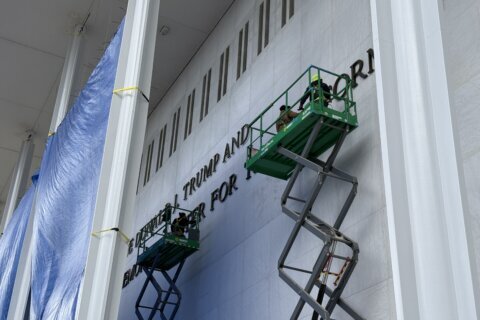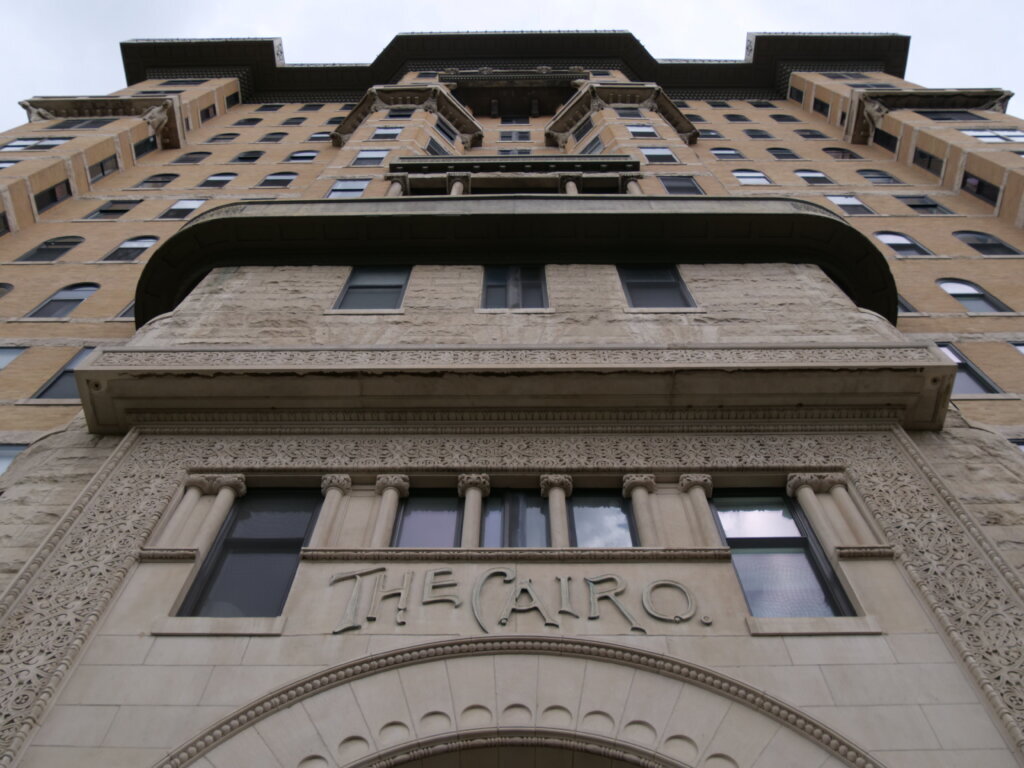
At 12 floors and 164 feet, The Cairo building in D.C. represented a changing world at the turn of the 20th century, when new construction techniques allowed for so-called residential skyscrapers.
“The building stuck out like a thumb,” said Uwe Brandes, professor of urban and regional planning at Georgetown University. “There are lots of excellent historic pictures showing The Cairo building kind of mushrooming up, towering above.”
Residents and politicians alike disapproved of the building that to this day is the tallest privately owned structure in the District. In the years following its construction, the federal government passed the Height of Buildings Act of 1910, which set strict height restrictions that have since solidified the city’s low and horizontal skyline.
“The Cairo building is not a skyscraper in the New York and Chicago sense; but for Washington, it was a tall building, and it prompted the Height Act and created a more uniform law for the city,” Brandes said.
While amendments have been made in the following century, that bottom-line height restrictions have remained: a 90-foot cap for buildings on residential streets and a 130-foot cap for buildings in commercial corridors.
As is the case with all rules, exceptions exist. For example, the Basilica of the National Shrine of the Immaculate Conception was built in 1959 and stands at 329 feet, making it the tallest building in D.C., excluding the 555-foot Washington Monument.
But much like at the turn of the 20th century, the nation’s capital once again faces a changing world, and this time, the shift is the city’s empty office buildings.
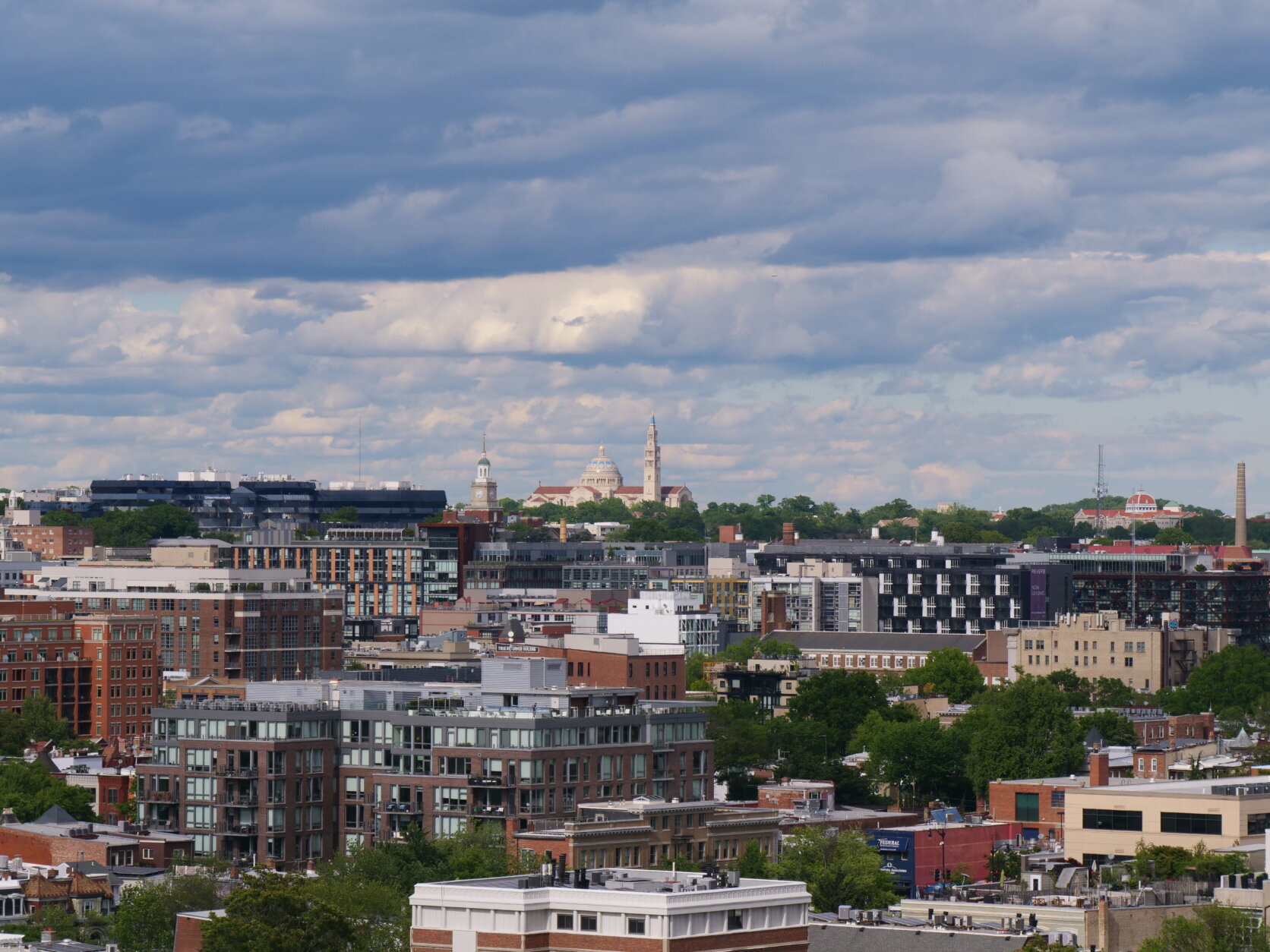
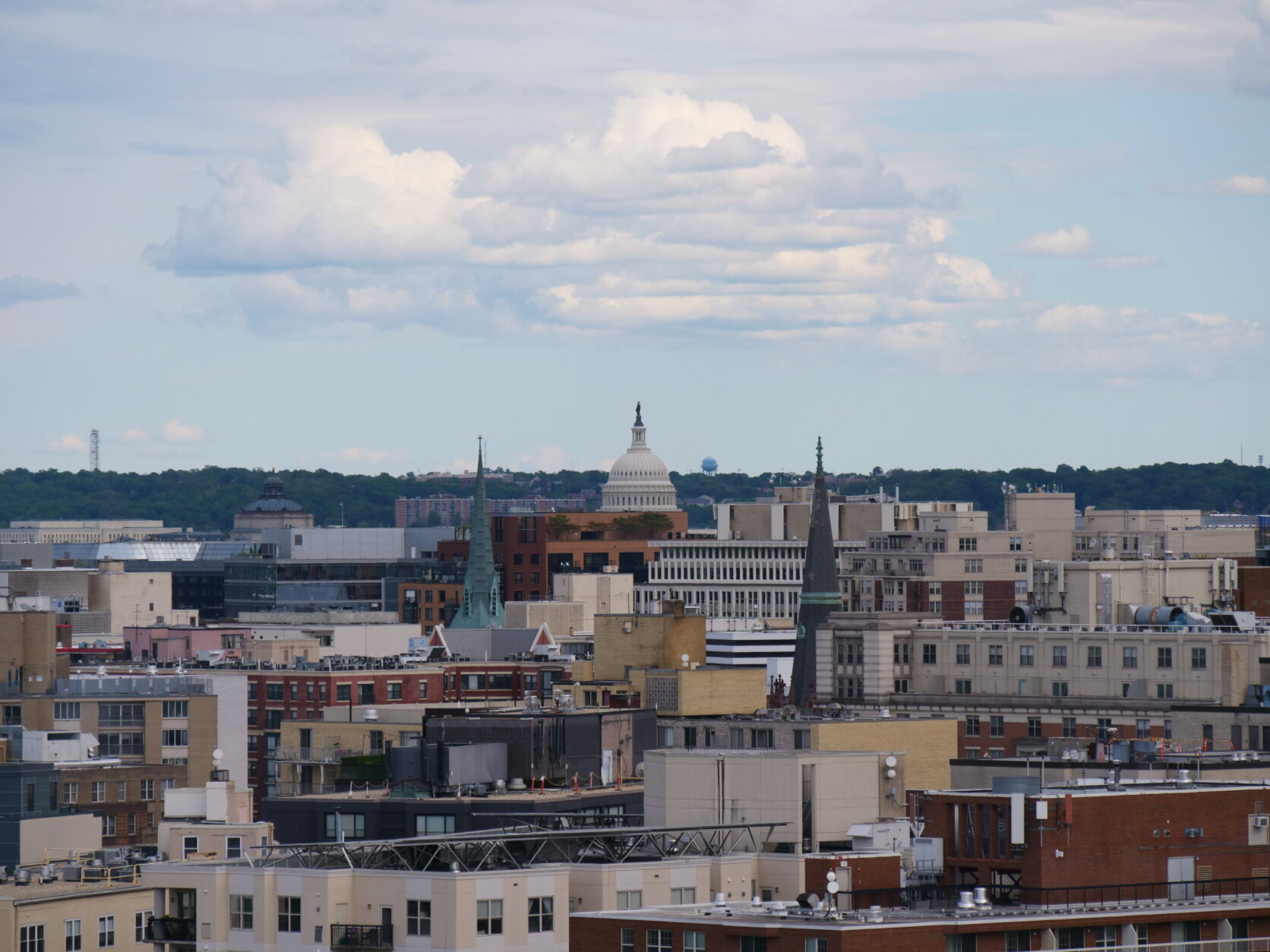
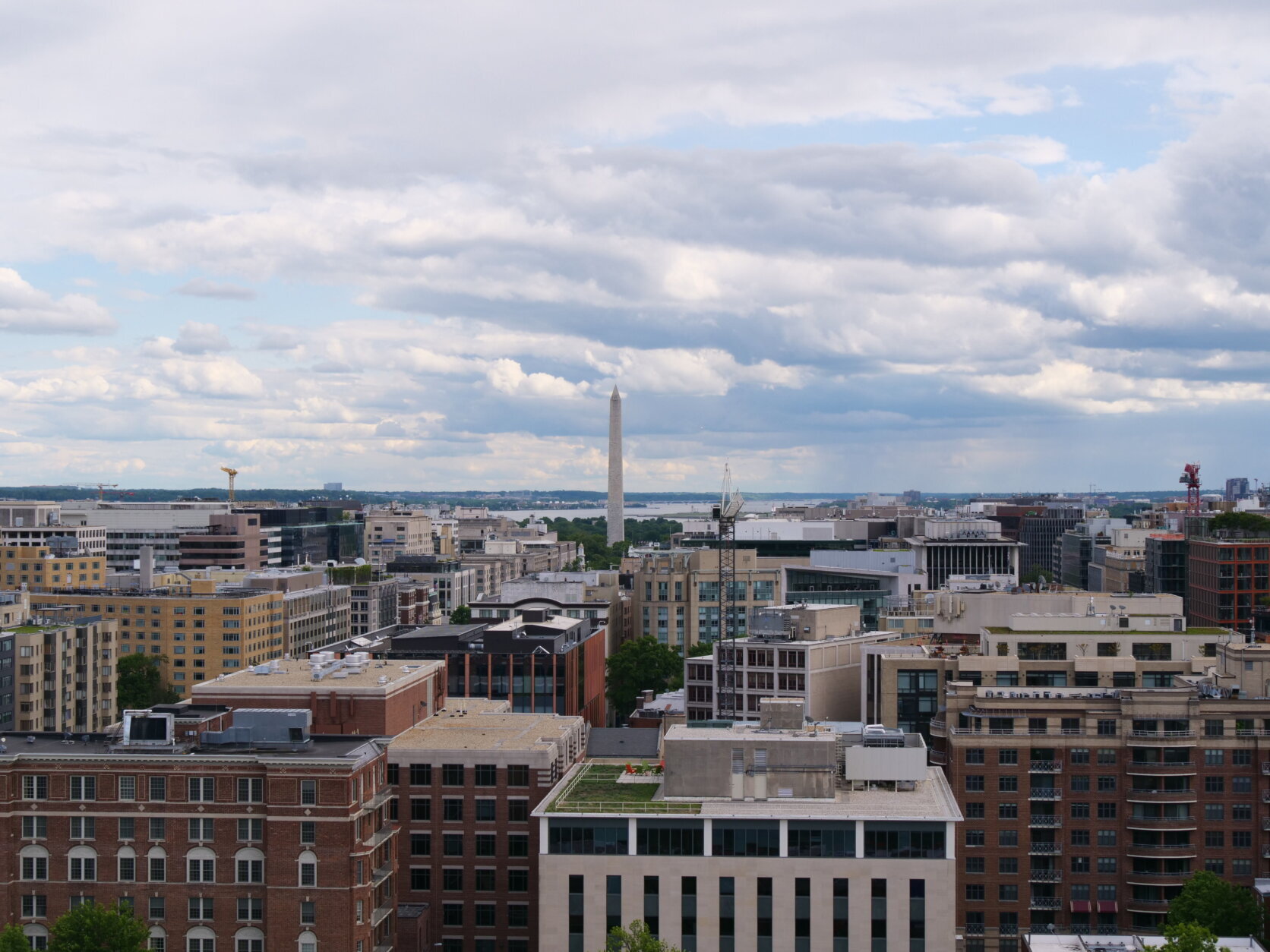
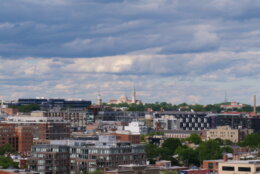
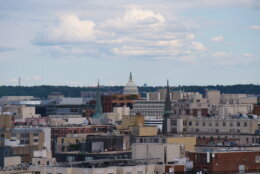
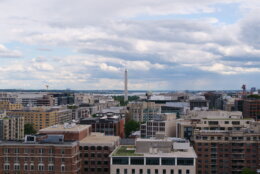
At the start of 2023, office occupancy in the D.C. region was only 46%, according to data collected by key-card swipes tracked by Kastle Data Systems. That’s less than half the pre-pandemic occupancy rate in office buildings. And this work-from-home revolution seems to be sticking, with more than two-thirds of people in the D.C. area with remote jobs saying they want to keep it that way, according to a Washington Post poll.
“While there is a lot of concern, of course, about the kind of economic challenges that this work-from-home revolution poses to the city, this is our opportunity to re-imagine city life, neighborhood life,” Brandes — who also works for the mayor’s office — said.
Brandes is talking about D.C. Mayor Muriel Bowser’s Comeback Plan, a five-year economic plan to reinvigorate a struggling and quiet downtown, replacing empty office buildings with bustling residential ones.
“In certain areas such as the downtown and the Golden Triangle in Washington, let’s imagine how they might become the cornerstones for a kind of a revitalized set of districts,” Brandes said.
A key goal of this plan is to “add 15,000 residents to the Downtown population by adding seven million square feet of residential units.” This will require more room to build.
“You can imagine relatively modest changes in the Height Act that allow for maybe one or two additional floors to be added to buildings in the downtown,” Brandes said. “You wouldn’t even be able to perceive that as you walk down the street.”
Yet changing the century-old Height Act may not be easy. Back in 2014, 61% of residents opposed any changes to the Height Act, according to a Washington Post poll.
“I’m all in favor of the height limit,” D.C. resident and housing developer Ted Romano said. “That’s one of the things I enjoy about living in the city because you can see more of the sky. It’s so beautiful. I don’t want to lose that.”
D.C. Council Chairman Phil Mendelson agreed — opposing changes to the Height Act.
“I still support the current limit on heights,” Mendelson said. “It is a unique and defining characteristic of Washington, D.C., of our nation’s capital of our city, our horizontal skyline.”
But Mendelson — at least for now — stands alone among his peers. Of the 12 other D.C. council members, four said they are in favor of changing the law and eight said they don’t have a stance on the issue yet.
Ward 5 Council member Zachary Parker told WTOP his support for revising the Height Act isn’t just about revitalizing the city’s downtown.
“The District needs to address its affordable housing crisis through more density, so the Height Act should be on the table for negotiation as a way to increase density and housing units,” Parker said.
At-Large Council member Anita Bonds went further, saying she’s ready to change the Height Act now in the name of affordable housing.
“If you look at other capital cities in the world, their beauty is not negatively impacted by the height of their buildings,” Bonds said. “If there were a reasonable proposal before me to amend the Height Act, I’d vote for it today.”
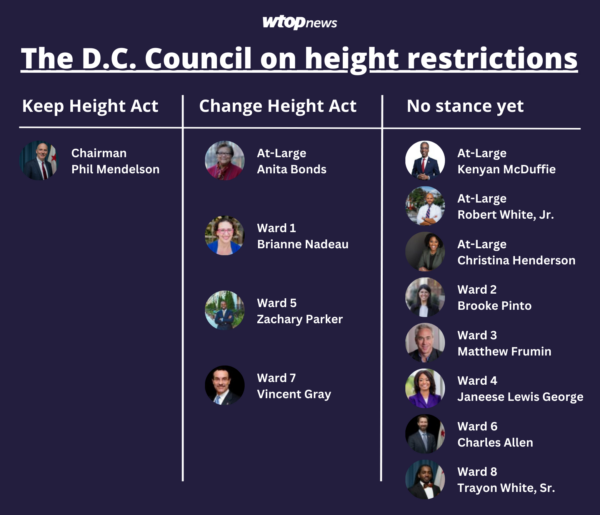
Ward 1 Council member Brianne Nadeau said changes to city zoning will make a bigger dent, but she’s open to changing height requirements.
“I support a change to the Height Act, but I think it’s a distraction,” Nadeau said. “We could double the amount of housing in the city right now if we updated the zoning code, even with the Height Act in place.”
And it’s for this reason, Mendelson described any changes to the Height Act as “crazy.”
“Folks think that the reason why we don’t have more affordable housing, for example, is because of the Height Act,” Mendelson said. “It’s not true. In most of the city, the zoning is below what the Height Act would allow.”
City planner Brandes said this latest debate over the Height Act is just getting started.
“I think we’re at the beginning of this conversation all over again,” Brandes said. “We’ve had this conversation multiple times. About 10 years ago, we had a very thoughtful, mindful conversation about the Height Act.”
What’s different this time around is the work-from-home revolution and a changed world left in the wake of the COVID-19 pandemic — the same sort of cultural and technological shift that instilled the D.C. Height Act in the first place.



